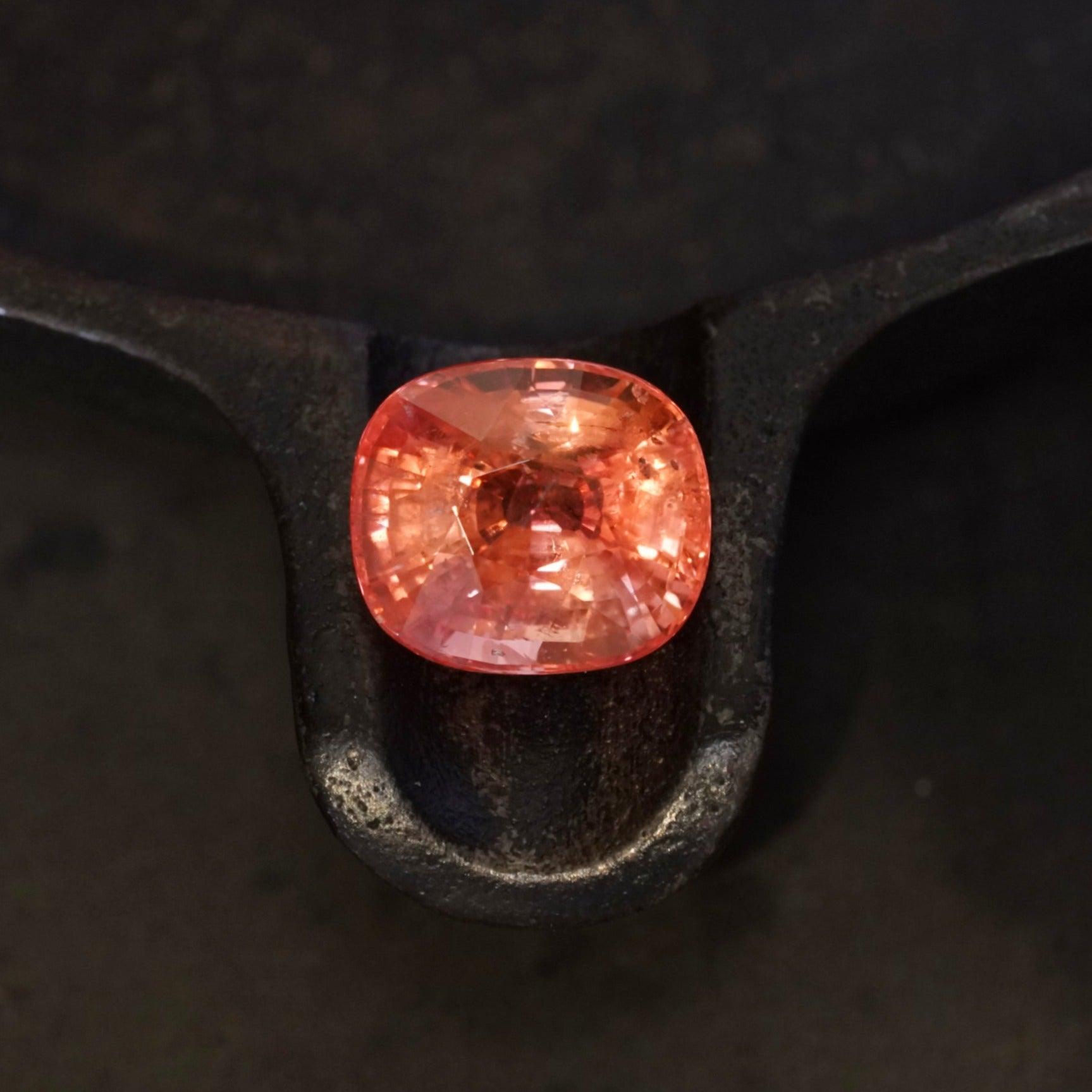
Padparadscha: What’s Special About the Rarest Sapphire
The Great Pyramids, Leonardo Da Vinci’s Mona Lisa, the works of William Shakespeare, the landing of a man on the moon—these are all monumental human achievements. In the realm of nature, however, gem connoisseurs often agree that the padparadscha sapphire is one of its greatest marvels.

Padparadscha sapphires boast an exquisite and unique color combination, unlike any other gemstone. True padparadscha sapphires are also exceedingly rare—far rarer, in fact, than fine Kashmir sapphires or Burmese rubies. This makes them one of the world’s most valuable and highly sought-after gemstones.
The Rare Beauty of Padparadscha Color
Padparadscha sapphires belong to the corundum family of gemstones, which includes all sapphire and ruby varieties. Corundum, a durable aluminum oxide, is colorless in its purest form. However, trace elements present during formation alter its color. For example, iron and titanium create blue sapphires, while chromium produces ruby. In padparadscha sapphires, a rare combination of iron and chromium gives rise to their breathtaking mix of pink and orange hues.
The most significant feature of padparadscha sapphires is their color, which is often poetically compared to that of a lotus blossom. In fact, the word “padparadscha” means “lotus blossom” in Sinhalese, the primary language of Sri Lanka (formerly Ceylon), the stone’s original source. The lotus in question is a water lily with a delicate, pinkish-orange to orangey-pink hue, reminiscent of the colors seen in salmon or a vibrant sunset.

This range of pinkish-orange to orangey-pink hues has created a challenge for the gemstone industry to define the quintessential padparadscha “color.” However, there’s a general agreement that padparadscha sapphires should range in color from light to medium pinkish-orange to orangey-pink. As a result, there’s a diverse assortment of padparadschas from which gem lovers can choose the ratio of pink and orange that suits their preference.
Clarity is also important for padparadscha sapphires. Due to their lighter color, inclusions—internal features or flaws—are more visible and can detract from their beauty. However, given their rarity, collectors may prioritize a stone’s exceptional color over clarity.
Padparadscha: A Perfect Choice for Engagement Rings
The lotus blossom metaphor represents more than just the color of padparadscha sapphires. A lotus blossom grows from the bottom of a muddy, murky pool; then ascends from the water as a beautiful flower, completely unstained. At night, it closes and sinks back under the water, emerging again with the sunlight of a new day. As such, the lotus blossom represents such things as enlightenment and rebirth for the ancient Egyptians and Buddhists, as well as purity, prosperity, fertility, and eternity for Hindus. These are all qualities of great meaning, especially for two lives about to be joined as one, which makes the padparadscha sapphire especially appealing for popping the question.
Because padparadscha sapphires are so rare, gem cutters prioritize preserving as much of the rough stone as possible. This may result in an engagement ring with a one-of-a-kind shape, further enhancing its allure.

Padparadscha sapphires are also often found in the popular oval and cushion shapes, as well as round, pear, square, and rectangular cuts. Stones over two carats are rare, while those exceeding five carats are considered world-class.
A stunning example of a padparadscha engagement ring is the one given to Princess Eugenie, granddaughter of Queen Elizabeth II, by Jack Brooksbank in 2018. Her ring features an oval-shaped padparadscha sapphire estimated at around five carats.
Padparadscha Treatments and Pricing
Due to their scarcity and high demand, treatment methods have been developed to simulate padparadscha-like colors in sapphires.
One such method is lattice diffusion, also known as beryllium diffusion. This process involves exposing some pink sapphires to high temperatures in the presence of beryllium to produce sapphires with padparadscha-like hues. However, because beryllium penetrates deeply into these sapphires, it’s extremely difficult to detect. Gemologists have since developed reliable testing procedures to determine if a sapphire has undergone beryllium diffusion.
Many natural padparadscha sapphires are also heat-treated to improve their color. These treatments are stable and the stones remain beautiful over time. However, even a good-quality heated padparadscha can be quite expensive.

For a more affordable option, some collectors turn to padparadscha sapphires from Madagascar. While the finest examples still come from Sri Lanka, Madagascan padparadschas tend to have more pink than orange tones and are typically priced around 20 percent lower.
Whether your preference is for a pinker or more orange hue, padparadscha sapphires are absolutely lovely to behold, as you can see in the outstanding examples we have in the Jogani collection. Their soft, neutral colors pair beautifully with both white and yellow metals and can be complemented by a variety of other gemstones. Add to that the rarity and symbolism of the stone, and you truly have a timeless treasure to be cherished for a lifetime.


